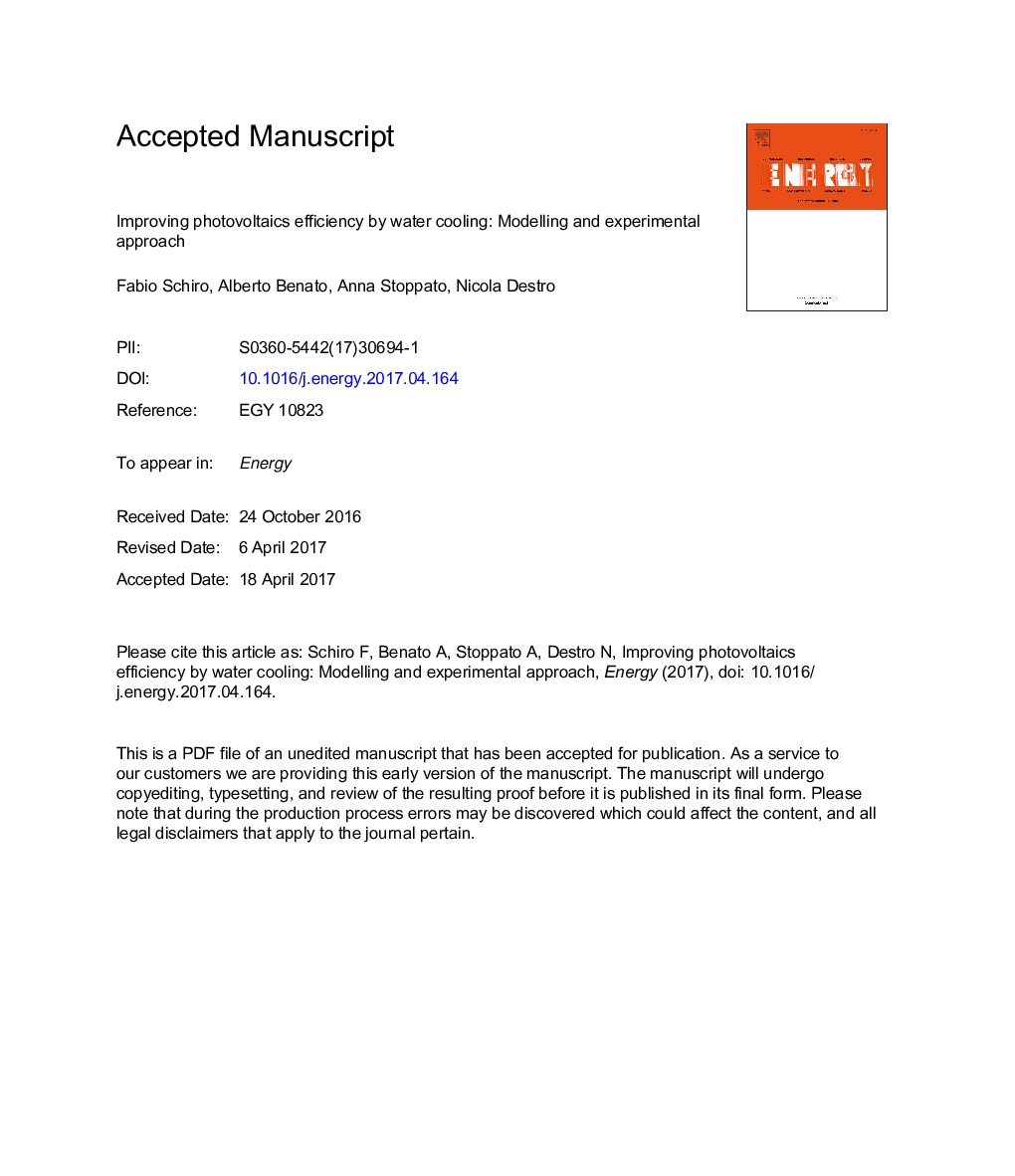| Article ID | Journal | Published Year | Pages | File Type |
|---|---|---|---|---|
| 8072792 | Energy | 2017 | 26 Pages |
Abstract
The increase of photovoltaic cells operating temperature causes an almost linear reduction of their performance. Therefore, continuous efforts need to be done to improve the cells efficiency by controlling their temperature. For this reason, in the present work, the possibility of adding a cooling system to existing photovoltaic units without changing the original module structure is investigated. The selected cooling methods use water to cool the module front side. To investigate the system behaviour, a steady-state and a PV dynamic model have been firstly developed. The steady-state thermal model is used to compute the module permanent regime temperature in relation to fixed and constant ambient conditions and cooling regime while the dynamic model is used to predict the time-response of the module thermal mass during the variation of external parameters. Then, after the design and installation of a test facility, preliminary experimental investigations have been carried out to validate the mathematical models. Finally, the energy and economic performance of the system and the identification of guidelines able to improve the PV overall performance have been presented and discussed. Some preliminary outcomes of the experimental activity on photovoltaic cooling are also outlined.
Keywords
Related Topics
Physical Sciences and Engineering
Energy
Energy (General)
Authors
Fabio Schiro, Alberto Benato, Anna Stoppato, Nicola Destro,
